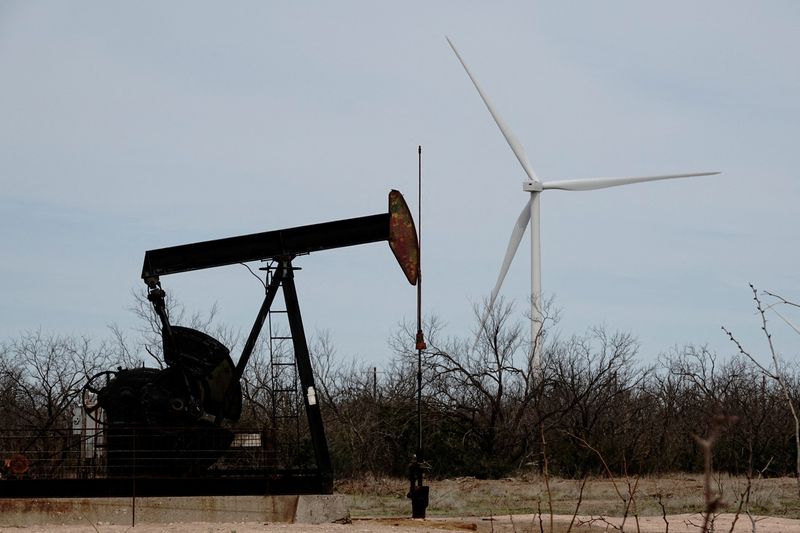
(Reuters) – Republican Donald Trump and Democrat Kamala Harris have a couple of things in common on the issue of U.S. energy policy: both say they want to expand production and keep prices down for consumers.
The core difference is that Harris says she wants to do so in a way that favors clean energy technologies crucial to fighting climate change, while Trump would do so by rolling back green regulations that hinder oil and gas drilling and coal mining.
That contrast that has come to define the U.S. political debate around energy and climate in recent years, and voters will face it yet again as they prepare to head to the polls next Tuesday to choose their next president.
The stakes are huge for global climate efforts, which scientists say are already falling short of addressing the speed and enormity of global warming, and which would take a further hit should the world’s largest historical emitter abandon its efforts to clean up.
Here are details about Harris and Trump’s proposed energy and climate policies:
‘ENERGY DOMINANCE’
The U.S. has become the world’s largest oil and gas producer in recent years thanks to a drilling boom in fields like the Permian Basin under Texas and New Mexico.
This happened under the watch of Democratic President Joe Biden, even as he sought to advance the nation’s most ambitious climate agenda that included historic subsidies for solar, wind, and other clean energy technologies as well as regulations to curb greenhouse gas pollution.
Trump’s campaign says Trump paved the way for the boom by slashing red tape during his term in the White House. It argues Trump could expand U.S. dominance in fossil fuel production in a second term by rolling back Biden’s climate initiatives.
Harris, by contrast, says high oil and gas production are beneficial to the U.S. energy transition by keeping consumer prices low at a time the country is investing in a shift to lower emissions energy sources.
She has also said she no longer supports a ban on fracking, the drilling technology that has unlocked much of the new U.S. production, a reversal from her stance during her 2020 run for the White House.
INFLATION REDUCTION ACT
Trump has said he would “rescind all unspent funds” under the Inflation Reduction Act, the Biden-Harris administration’s signature climate law.
The 2022 law includes hundreds of billions of dollars in subsidies for electric vehicles, solar and wind energy, and other clean energy technologies and has drawn huge investments in domestic manufacturing in those industries.
Any changes to the law would require an act of Congress and several Republican lawmakers have expressed support for keeping it, or parts of it, in place. Many of Trump’s allies benefit from the IRA through their investments in clean energy technologies.
Harris backs the IRA and has said her administration would keep making investments in clean energy if she won the election.
PARIS AGREEMENT
During his 2017-2021 term as U.S. president, Trump withdrew the U.S. from the Paris Agreement, an international pact to fight climate change, arguing it was unnecessary and put the country at a competitive disadvantage to China.
Trump’s campaign said he would do it again if he wins.
Harris would keep Washington in the deal, which Biden swiftly rejoined in 2021.
THE GRID
Trump’s campaign has said the Biden-Harris administration’s efforts to support adoption of electric vehicles and eventually curb the use of fossil fuels poses a risk to the nation’s power grid at a time of soaring electricity demand. It pledged changes that would ease permitting for new power plants.
In April, Biden’s Environmental Protection Agency finalized rules targeting pollution from power plants, an industry responsible for nearly 25% of U.S. carbon emissions. The rules will effectively require coal-fired power plants and new natural gas-fired generators in the coming decade to capture emissions before they reach the atmosphere.
In a Sept. 5 speech, Trump slammed the rule, saying it set the stage “for a catastrophic energy shortfall that will make inflation far worse.”
“I will immediately issue a National Emergency Declaration to achieve a massive increase in domestic energy supply,” Trump said in the speech. “With these sweeping authorities, we will blast through every bureaucratic hurdle to issue rapid approvals for new drilling, new pipelines, new refineries, and new power plants and reactors.”
Harris’ campaign has also promised to speed up permitting, but mainly for projects that have low or no emissions.
“A Harris-Walz Administration will do this by continuing to invest in a thriving clean energy economy and helping realize the full potential of those investments by cutting red tape so that clean energy projects are completed quickly and efficiently in a manner that protects our environment and public health,” according to her campaign website.
Trump also opposes U.S. auto-emissions regulations announced in March, lumping them into a group of Biden’s green initiatives that he says are distorting markets, driving up prices and limiting consumer choice.
Trump has also promised to put an end to the offshore wind industry, already struggling under the weight of high costs and local opposition to projects. The policy differs from that of his first administration, which supported the technology.
Harris supports both offshore wind and EVs.
LIQUEFIED NATURAL GAS
The Biden-Harris administration froze new liquefied natural gas (LNG) export permits in January to study their environmental impacts, an election-year move that pleased green groups and voters.

If Harris wins, she will likely be tasked with unwinding the pause and incorporating any new recommendations from the promised review, which the administration says is expected to land after the vote.
Trump has said he would immediately lift the freeze, while Harris’ campaign has said her approach on LNG will be guided by the review’s outcome.
This post is originally published on INVESTING.





